#animal facts
Text

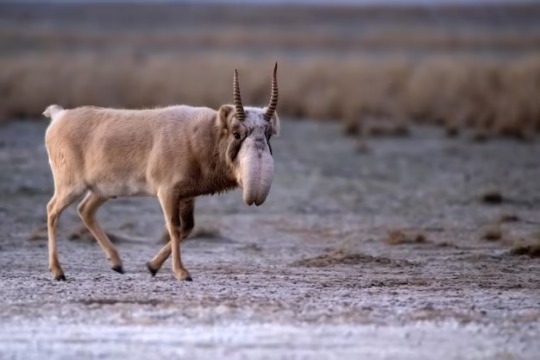
Saiga antelope (Saiga tatarica)
Saiga don’t only look weird, but are found in the last place you would expect antelope to be- the cold, dry Eurasian steppe. Their large nose helps filter out dust and warm air before it reaches their lungs, and they also develop a warm, grey-brown coat in the wintertime. During the last ice age, saiga antelope were found across the cold northern steppe, from Britain and Mongolia to Alaska. Unfortunately, they are now critically endangered, found only in a few refuges in Kazakhstan and the surrounding countries.
#markhors-menagerie#animal facts#animals#biology#fun facts#ungulates#even toed ungulates#ruminants#bovidae#antelope#saiga antelope
54 notes
·
View notes
Text
Wet Beast Wednesday: spiny softshell turtle
It may be neither Flat Fuck Friday nor Turtle Tuesday, but because this is my series and I can do what I want, I'm talking about a very flat turtle. The spiny softshell turtle (Apalone spinifera) is the most widely distributed and possibly the most common softshell turtle in North America. Its range covers most of the Eastern half of the USA and stretched into Canada and Mexico. There are 6 subspecies separated by geography and hybridization can happen in places where their ranges cross. Hybridization has also been known to happen with the Florida softshell (Apalone ferox). The subspecies are the northern (A. s. spinifera), gulf coast (A. s. aspera), Texas (A. s. emoryi), pallid (A. s. pallida), Guadalupe (A. s. guadalupensis), and black (A. s. atra) spiny softshells.

(Image: a spiny softshell turtle seen from above and to the side. It is a turtle with a wide, flat shell. Its head and one foot are visible. The head is skinny and has an elongated nose. The foot is wide and flat, with webbed toes. The turtle is an olive green with black dots on the skin, yellow stripes on the face, and dark spots on the shell. End ID)
The thing that makes a softshell a softshell is the lack of keratinized scutes on their shells. This makes the shells smooth and leathery. The center of the shell has a layer of solid bone user it, but this does not extend to the edges of the shell, making it less rigid. Softshells are the fragile speedsters of the turtle world. Their shells are a lot lighter and often more streamlined, allowing for faster movement both on land and in water, but they provide less defense. Spiny softshells have spiny projections along the front edge of the carapace (upper shell), with males having more than females. They are some of the largest North American freshwater turtles. Females can reach a carapace length of 54 cm (21 in) and 11 kg (25 lbs) while the smaller males max out at about 25 cm (10 in).
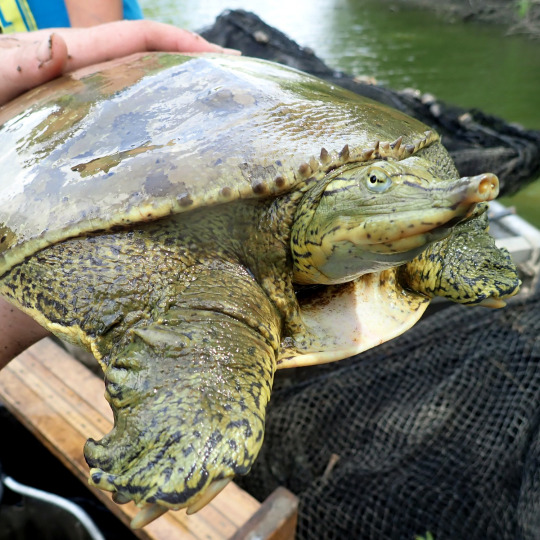
(Image: a spiny softshell being held by a person, seen from the front. The leading edge of the carapace is visible, showing off the small spines. End ID)
Spiny softshells have wide, flat, paddle-like feet with three claws and an elongated nose that acts like a snorkel. The turtles are born a bright olive color with striped faces and dark spots on the shell. Males keep their juvenile coloration for their entire lives while females grow darker ad lose many of their markings. It can be very difficult to tell females of different subspecies apart, while males and juveniles can be distinguished by their markings. Smooth skin and highly vascularized membranes in the cloaca, mouth, and throat allow the turtles to breathe by diffusing dissolved oxygen from the water into their blood.
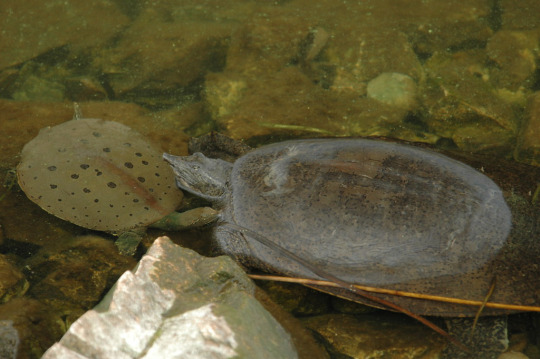
(Image: a male and female spiny softshell facing each other. The male is less than half the size of the female and has an olive colored shell and skin, with dark spots on the shell. The female is a uniform muddy brown color. End ID)
Spiny softshells are generalists able to live in a wide range of habitats. They prefer streams, rivers, and ponds with muddy or sandy bottoms and high visibility, but can live in most freshwater habitats. Softshells are diurnal, spending their days basking and feeding. Being turtles, they are ectothermic, meaning their body temperature matches the surrounding temperature. To warm themselves up, the turtles bask in the sunlight. They can often be found resting on exposed rocks, logs, sandbars, or shorelines. While not particularly social animals, the turtles will bask in groups. When threatened, softshells will attempt to swim away and/or bury themselves. In the right sediment, a softshell can bury itself in under a second. Because their shells are less rigid, softshells have to actively defend themselves when cornered and will bite and scratch. People have to be careful when handling them. They brumate (that's hibernation for reptiles) during winter. While brumating, they bury themselves underwater and slow their metabolism and oxygen requirements. In this state they can fully sustain themselves on oxygen absorbed through their skin or special membranes.
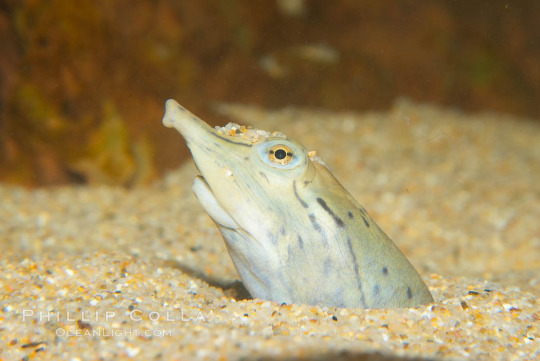
(Image: a spiny softshell turtle buried in its hunting strategy. Only the head is visible above the sand. End ID)
They are primarily carnivores and will eat anything that can fit in their mouths. Aquatic insects, crayfish, worms, amphibians, mussels, snails, fish, and more are on their plate. While capable of fast swimming, they are not pursuit predators. They employ two primary hunting strategies. The first is to bury themselves in the sediment and wait for prey to come by. The second is digging in the sediment to find worms and other animals. Fish have been known to follow digging turtles around to feed on animals unearthed by them.

(Image: a spiny softshell in captivity. It is swimming at the surface of the water in a tank, amongst artificial leaves. End ID)
Spiny softshells mate in spring. Males attempt to woo females by swimming over to them and bumping heads together. The male then sits on top of the female to mate. Unlike most species of turtles, the males do not grab onto the female's shells during mating. Eggs are laid between summer and early fall and will hatch next spring. The female will dig a nest in sandy or gravelly banks and bury the eggs once they have been laid. She provides no further care. Females will typically mate multiple times each year, with each mating having a different nest. The juveniles take 8 to 10 years to reach sexual maturity and they can live up to 50 years in the wild. Many turtles determine sex by the temperature the eggs are incubated in. This is not the case with spiny softshells, who have genetics based sex determination.

(Image: a group of 5 juveniles. The photo focuses on two who are sitting next to each other. One has its front right leg on the shell of the other. They have similar coloration to an adult male. End ID)
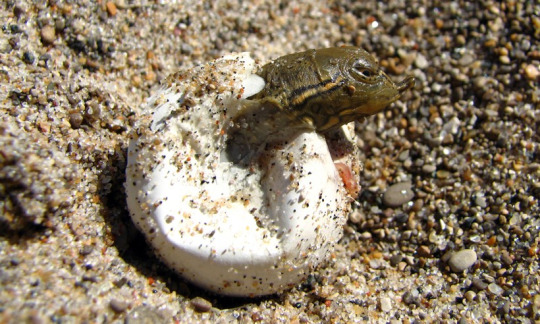
(Image: a newborn emerging from its egg. The egg is round and white, looking like a ping-pong ball. Only the head of the turtle has emerged. End ID)
Most subspecies of spiny softshell are classified as least concern or near threatened by the IUCN, meaning they are not in danger of extinction. The exception is the black spiny softshell, also known as the Cuatro Ciénegas softshell, which is critically endangered. The primary threats to the turtles is habitat loss due to human activity. Adults have no natural predators outside of the Florida and adjacent state populations, which are prey to alligators. Juveniles are eaten by a variety of animals including fish, snakes, raccoons, and herons. People will also eat the adults. Because it can take a whole decade for juveniles to become reproductive, losses in population take a long time to replace. They have been introduced to areas outside of their native range, most notably the western USA. Most of these introductions are due to people releasing pet turtles into the wild.
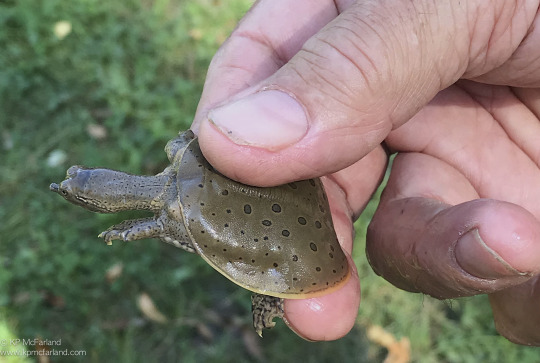
(Image: someone holding a juvenile. The shell is 2-3 times the size of the human's thumb. End ID)
#i typoed it as softhsell more times than I care to admit#wet beast wednesday#turtle#turtles#softshell turtle#soft shell turtle#spiny softshell turtle#reptile#biology#zoology#ecology#animal facts#freshwater ecology#aquatic biology#informative#educational#image described#turtle power#herpetology
39 notes
·
View notes
Text
every single day I think about how american black vultures are known for engaging in interspecific allopreening (preening between different species)
and they have a specific relationship with crested caracaras, in which the black vultures assist them by not only preening them after meals but also leading them to food in the first place— due to their superior sense of smell— while the caracaras assist the black vultures by acting as a warning signal in case of danger
and while this is more typical of black vultures, this is not common at all for any member of the falconidae family— it’s a special bond!

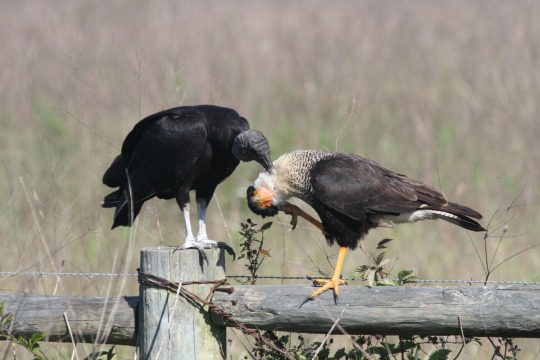
yet another post in favor of vultures everyone , hope you enjoy:) and I implore you to do some more research on these incredible birds !!
EDIT: I meant interspecific allopreening! excuse my typo!
#birds#birdposting#bird blogging#birdblr#black vulture#crested caracara#animal facts#bird facts#vultures#daemnthoughts#daemnblogging
33K notes
·
View notes
Text

45K notes
·
View notes
Text
I have never seen an animal sleep in such a cursed way what
18K notes
·
View notes
Text

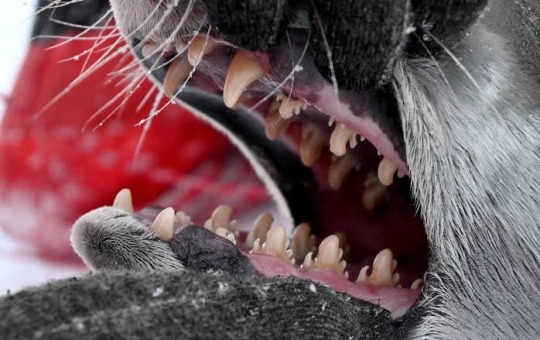
The teeth of a crabeater seal
Specially evolved for sieving krill & small crustaceans out of the seawater! These highly adapted seals are the most abundant species of pinniped on the planet.
6K notes
·
View notes
Text
The Camouflaged Looper: these caterpillars fashion their own camouflage by collecting flower petals/vegetation and using silk to "glue" the pieces onto their bodies
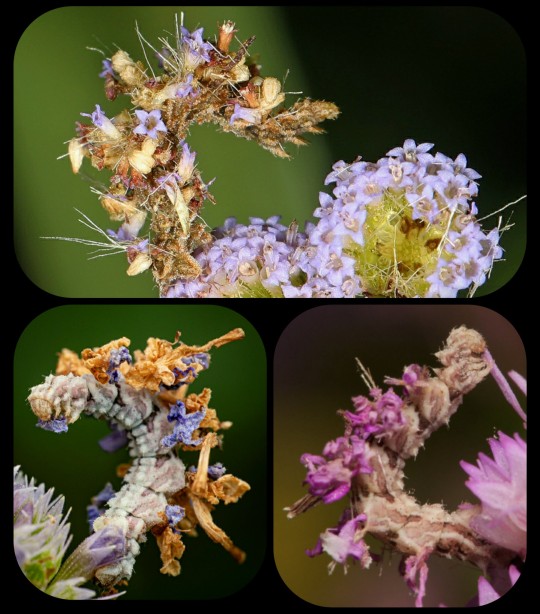
Though they're often referred to as "camouflaged loopers," these caterpillars are the larvae of the wavy-lined emerald moth (Synchlora aerata).
Camouflaged loopers deploy a unique form of self-defense -- they snip off tiny pieces of the flowers upon which they feed, then use bits of silk to attach the vegetation to their backs. This provides them with a kind of camouflage, enabling them to blend in with the plants that they eat.

Some of them create little tufts that run along their backs, while others fashion a thicker camouflage that covers their backs completely. In some cases, the camouflaged loopers will even build much larger bundles that surround their entire bodies.
Their range includes most of North America (from southern Canada down through Texas) and they can feed upon an enormous variety of plants -- so the disguises that these caterpillars build can come in countless colors, shapes, and sizes, incorporating many different flowers and other bits of vegetation.

And this is what the fully-developed moth looks like:
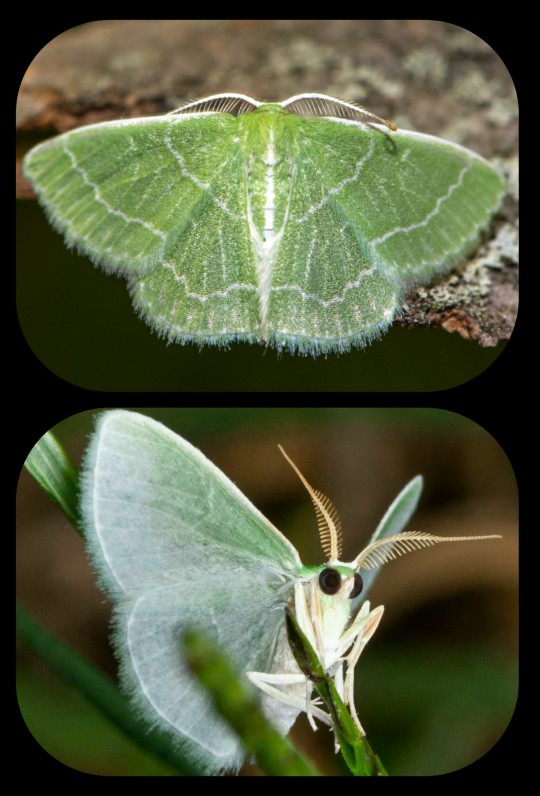
Sources & More Info:
Loudoun Wildlife Conservancy: Wavy-Lined Emerald, Master of Disguise
Maryland Biodiversity Project: Wavy-Lined Emerald Moth (Synchlora aerata)
The Caterpillar Lab: Camouflaged Looper
University of Alberta Museums: Synchlora aerata
Missouri Department of Conservation: Wavy-Lined Emerald
Nebraskaland Magazine: The Amazing Camouflaged Looper
Lake County Forest Preserves: Camouflage Revealed
#lepidoptera#moths#insects#caterpillar#camouflaged looper#animal camouflage#cute bugs#tw bugs#fashion#nature is weird#animal facts#these literal larvae have better fashion sense than I do
7K notes
·
View notes
Text

Meet one of the planet’s smallest turtles: the bog turtle (Glyptemys muhlenbergii)! This petite reptile grows up to 4.5 in (11.4 cm) long. It’s easily identifiable by the orange patches on either side of its head.
The bog turtle has an impressive lifespan, with the oldest documented individual reaching an age of 61! Unfortunately, this species is critically endangered due in part to poaching and habitat loss as a result of human expansion.
Photo: U.S. Fish and Wildlife Service Headquarters, CC BY 2.0, flickr (juvenile pictured)
#science#nature#natural history#animals#turtle#cool animals#did you know#animal kingdom#animal facts#reptile#herpetology#small animals
2K notes
·
View notes
Text

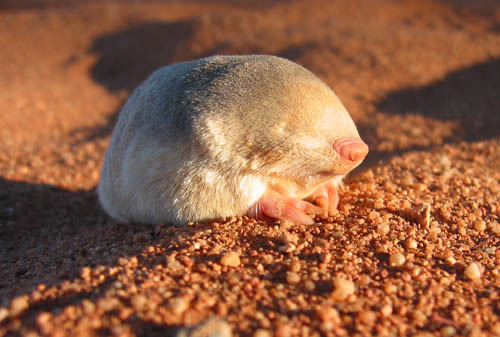
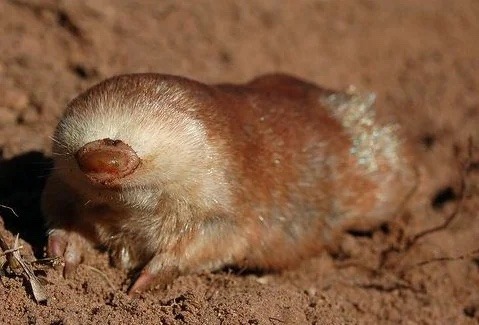
@sabertoothwalrus Now that people are interested in moles. These three moles are not related.
Top one is Laurasiatheria (same superorder as dogs, horses, bats, and hedgehogs)
Middle one is Afrotheria (same superorder as elephants, tenrecs, aardvarks, and manatees)
And the bottom one is Australidelphia (same superorder as cuscuses, quolls, bandicoots, and wallabies)
All three have convergently evolved to be moles! How cool is that!
3K notes
·
View notes
Text
Today in important facts about bunnies:
Northern Arctic hares have a strange habit of fleeing by hopping on their hind legs instead of running on all fours, and no one knows why the hell this happens

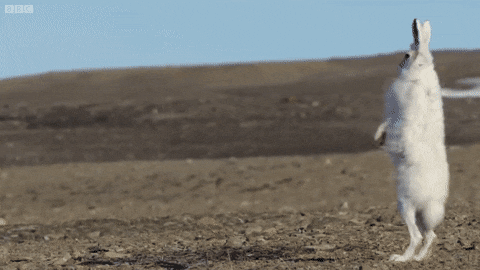
#animal#lagomorpha#arctic hare#lepus#hares#hare#lepus arcticus#bunny#nature#animal facts#important facts about bunnies#important facts#oh wow#this hit today#stay tuned for more lagomorph facts
27K notes
·
View notes
Text

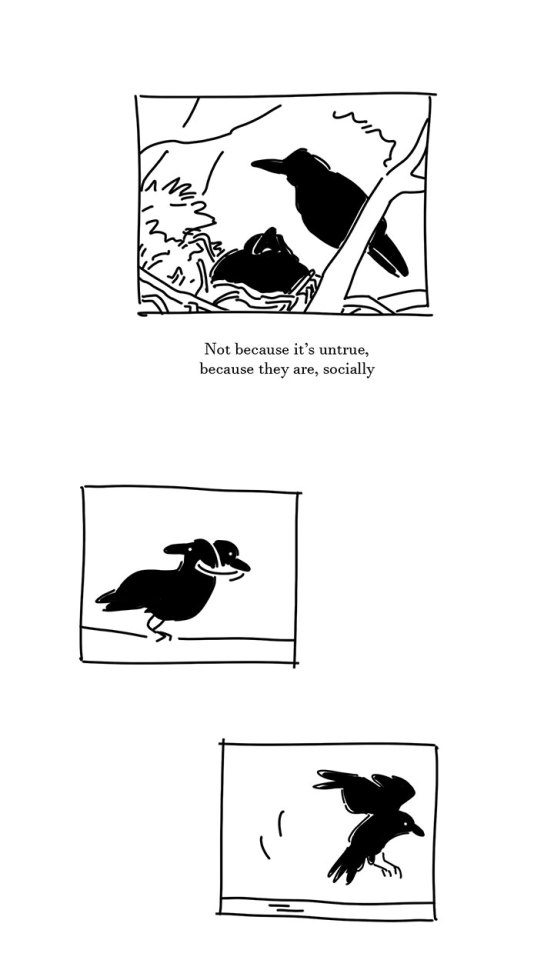

it IS just silly to compare human and animal behaviour like there's a moral lesson, but reading that crows are "socially monogamous but genetically promiscuous" has stuck with me lol
2K notes
·
View notes
Text
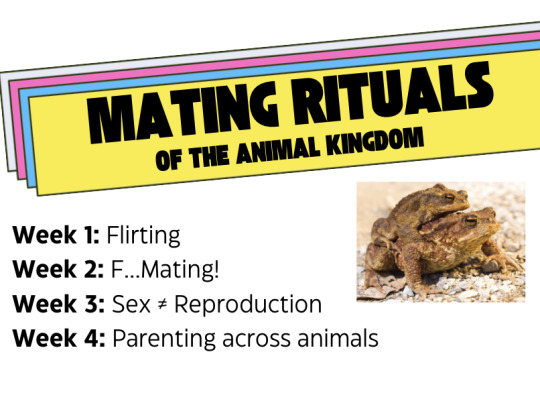
In my 4-week class, Mating Rituals of the Animal Kingdom, we'll cover things you never even THOUGHT to ask about animal mating.
INCLUDING:
-Spitballs, given as romantic gifts
-Spider Sex Percussionists™
-Bee perfumers
-Lemur Stink Fights
-Springtail females bench pressing males, who then Raccacoonie them to the pile of sperm the males prepared, so she then sits on it (God bless springtails)
-& MORE
Sign up here
I need 6 more people to sign up or Atlas Obscura won't run the course and this course is SO SILLY and SO FUN and you'll learn so much weird shit I can't even tell you. And JUST in time for VALENTINES day.
This class has no homework, and you can watch it live or later!
1K notes
·
View notes
Text
I heard it's Superb Owl Sunday so I have prepared some superb owls for you.
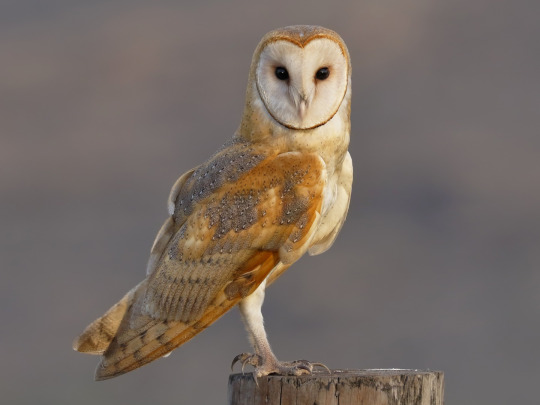
The barn owl is the most widespread species of owl, living on every continent except Antarctica. Their faces are shaped like a disk to help their hearing, giving them some of the best hearing of any owl. They mostly hunt by sound.

Snowy owls are the largest arctic predatory birds, They are born with black feathers and get whiter as they age. Females usually have more dark feathers than males.
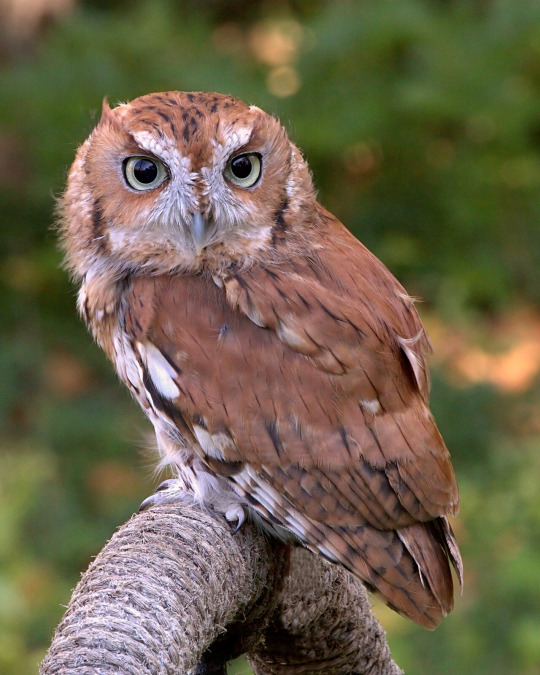

Eastern screech owls have a few feather variants that make them look like completely different species.

The southern white-faced owl can increase its metabolic rate during winter to compensate for the cold and lack of food. They lay their eggs in nests built and abandoned by other birds.

The great grey owl is the largest owl by length, but a lot of that is feathers and they're actually very light for their size. Their hearing is good enough to hear rodents burrowing through snow and they can break through hard-packed snow to catch prey.

Blakiston's fish owl is the largest owl by mass and eats mostly fish. Despite the name, they may be more closely related to eagle owls than fish owls.

The elf owl is the smallest owl species, barely larger than a sparrow. They hunt bugs and play dead when caught. They like to live in holes in saguaro cacti.

Burrowing owls live in underground burrows. While they can dig, they mostly take over burrows from other animals. Farmers killing prairie dogs has severely reduced burrowing owl populations. They decorate their burrows with feces to attract bugs to eat.
The barking owl is called that because
youtube
Its nice to have a day to appreciate superb owls. Feel free to spread the love by reblogging with some more owl facts.
#superb owl#superbowl sunday#owl#barn owl#snowy owl#eastern screech owl#southern white-faced owl#great grey owl#blakiston's fish owl#elf owl#burrowing owl#barking owl#animal facts#birds#birds of prey#Youtube
4K notes
·
View notes
Text
On this day of freedom, let's talk about how bald eagles are queer!

It starts with a female eagle named Hope and a male named Valor I. The two settled down to neat together, however Valor I wasn't a great dad. He did show up to incubate the eggs and basically never came around.
In comes another male, Valor II. He immediately did what a good eagle dad is supposed to, incubate, maintain the best, all that. This lead to him becoming Hope's new mate.
Here's where it gets interesting, Valor I didn't seem to mind and actually stuck around! Eventually Hope started mating with both of them, and Valor I even learned to be a good dad!

Unfortunately in 2017 Hope was killed by intruding eagles, but! The two male's actually stuck together and successfully raised their chicks!
Soon enough a new female named Starr came along and joined the two, and now she mates with both males every season!
This arrangement allows for the eagles to have a much more successful rate of raising chicks and fighting off other predators!
This particular story isn't the only one! Bald eagles have been seen in multiple arrangements including two females and one male!
#animals#nature#critters#wild life#wildlife#animal facts#facts#birds#bald eagle#pride#lgbt#lgbtq#queer#polyamory#america#fourth of july
4K notes
·
View notes
Text

2K notes
·
View notes
Text
Lobe finned versus ray finned fish

Short answer: ray finned fish evolved from from lobe finned fish
Long answer: Lobe finned fish were dominant for a long time in the waters before they climbed up onto land and evolved into you, dear reader. This occurred around 400 MYA (million years ago). Sometime before that, about 425 MYA, ray finned fishes had evolved, but remained relatively small. This was until the permian mass extinction (290-245 MYA), when many lobe finned fish died out, and ray finned fishes (teleosts) were left to flourish and evolve to fill the empty evolutionary niches. The only lobe finned fish left behind today are the elusive coelacanths and lungfish. ***AND*** as the awesome people in the notes would like me to add, all tetrapods (tetra meaning four, pod meaning foot) are phylogenetically lobe finned fishes as well. this means amphibians, reptiles, and mammals.
@marinebiologyshitposts @fuckyeahcoelacanths
#marine biology#lobe finned fish#ray finned fish#coelacanth#evolution#science#things ya should know#zoology#biology#ecology#animal facts#animals
1K notes
·
View notes